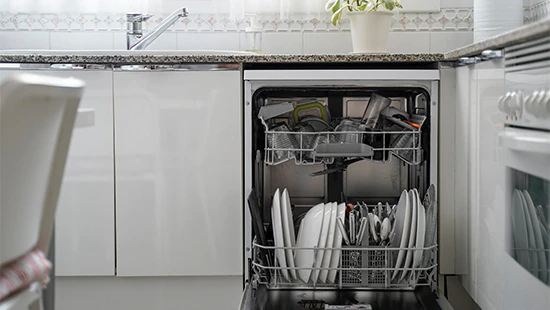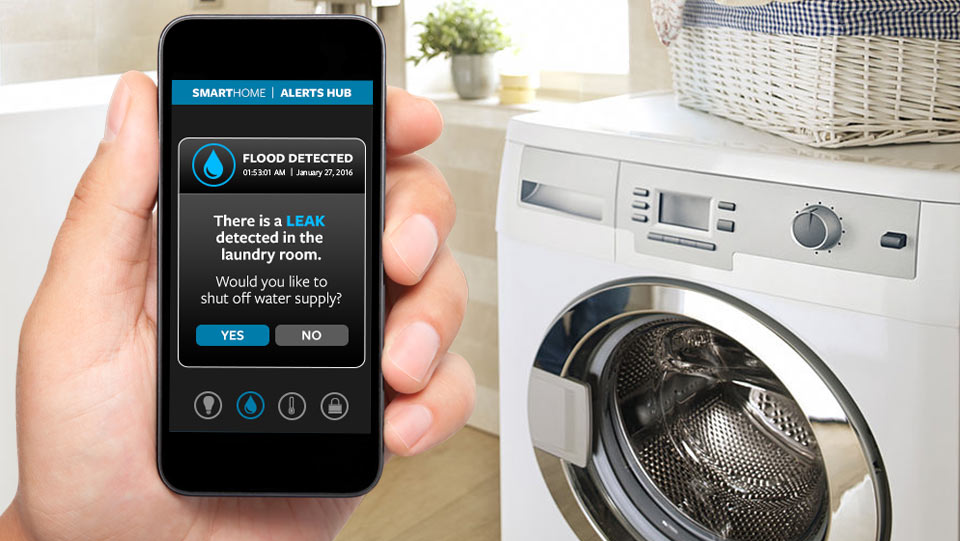Common Signs of Plumbing Problems

(DESCRIPTION)
This content is brought to you by Travelers. Logo, Travelers, red umbrella. Text, Inspecting Your Home Plumbing. An animated pipe in a basement leaks and the basement fills up with water.
(SPEECH)
[WHOOSH]
[MUSIC PLAYING]
SPEAKER: Water damage can cause billions of dollars in losses to homeowners every year.
(DESCRIPTION)
A clock turns backwards and the water in the basement sinks.
(SPEECH)
The good news is there are several easy things you can do to help prevent water damage in your home.
(DESCRIPTION)
A magnifying glass finds a crack on the pipe in the basement.
(SPEECH)
Start by locating the main water supply to your home and making sure it's working properly.
(DESCRIPTION)
A red lever on the main water supply line hinges up and down.
(SPEECH)
Then, you'll want to inspect any appliance that uses water.
(DESCRIPTION)
In a cutaway of a house, the fridge, washer and dryer, and toilet are circled. Leaks and cracks in the pipes and stains on the wall behind the appliances are highlighted.
(SPEECH)
Look for leaks, water stains, signs of corrosion, and damage to the hoses on your washing machine, refrigerator, or dishwasher.
(DESCRIPTION)
The base of a sink faucet in the bathroom blinks red.
(SPEECH)
In the bathroom, check caulking for damage.
(DESCRIPTION)
The faucet corrodes and leaks.
(SPEECH)
Check fixtures for leaks or signs of excessive corrosion. And look for damage, crimping, corrosion, and leaks in any exposed valves and supply lines.
(DESCRIPTION)
The cabinet opens and the pipe below the sink cracks and leaks. The tub blinks red.
(SPEECH)
Also, be sure to check around your tubs and showers.
Finally, be sure to check your heating and air conditioning equipment, including your water heater and boiler.
(DESCRIPTION)
The AC unit outside the house and the boiler in the basement are circled.
(SPEECH)
You'll want to look for signs of corrosion, cracking, leaks, and water stains.
(DESCRIPTION)
A calendar flips through the notes, clean gutters and plumbing inspection
(SPEECH)
Water losses can be avoided through regular maintenance or simple proactive repairs.
(DESCRIPTION)
Icons of a crossed wrench and screwdriver and a red manual pop up.
(SPEECH)
Consult with a licensed professional and your equipment manuals for further guidance. Talk to your Travelers representative or independent agent today.
(DESCRIPTION)
Logo, Travelers. Text, travelers.com. Travelers Casualty and Surety Company of America and its property casualty affiliates. One Tower Square, Hartford, CT 06183. This material does not amend, or otherwise affect, the provisions of any insurance policy issued by Travelers. It is not a representation that coverage does or does not exist for any particular claim of loss under any such policy. Coverage depends on the facts and circumstances involved in the claim or loss, all applicable policy provisions, and any applicable law.
Water damage due to a plumbing problem in your home can be life-changing. But there are some common signs that homeowners can look for, and steps they can take, to help avoid a major water issue at home.
Consider this example:
A homeowner and his family head off for a three-week vacation. While they’re away, a minor toilet leak grows, until it reaches a pace of three gallons of water per minute. By the time the homeowners returned from their three-week vacation, the unaddressed leak had poured more than 30,000 gallons of water into their home. The water ruined furniture, fixtures and irreplaceable family valuables, and rendered the property virtually uninhabitable for an extended period of time.
But this is just a cautionary tale. The following guidance is meant to help you learn about the potential water issues from common plumbing problems and how you can take steps to help prevent disaster.
What can cause common plumbing problems
Plumbing problems can occur anywhere in your home. Frequently, lack of maintenance is the root cause of these problems. However, other causes can include:
- Manufacturing and design defects.
- Installation errors.
- Exposure to cleaning products (for example, by storing chemicals under the sink or by cleaning surfaces of plumbing components).
If caught early, many plumbing problems can be addressed before serious damage occurs. For this reason, regular inspection of your home’s visible plumbing parts can be critical. Knowing the lifespan of parts and appliances is also important, as is properly maintaining the other parts of your home and its features and systems.
See the signs and know where to look
Want to help prevent plumbing complications from damaging your home and potentially resulting in expensive property damage or loss? Start by visually inspecting your plumbing on a regular basis. Look for drips and slow leaks. Be sure to check the areas surrounding your pipes as well. If you see water damage on cabinetry or other nearby materials, there may be an active leak that you’ll want to locate.
Your entire home plumbing system may not be visible, but there are certain places in your home where you can readily inspect plumbing components:
- Under sinks and washtubs.
- Inside access panels near showers, sinks or appliances.
- Attachments to toilets, water heaters and appliances.
- Basements and crawl spaces.
You will want to look at any piping, valves and fittings in the areas listed above. Leaks are most common at connection points, so pay close attention to the plumbing connections on faucets, washing machines, refrigerators, dishwashers, water heaters, water filtration systems, shut-off valves and toilets. Your home’s piping system may also have multiple connections between various sections of pipe. Appliances and fixtures themselves can cause problems, so be sure to inspect those as well, and keep up with any regular maintenance recommended by the manufacturer.
The signs of a problem will vary by component. For example, problems in copper piping may look very different from problems in PEX, a common type of plastic piping. In general, you want to look for signs of corrosion, cracking, hazing, discoloration and mineral deposits from a water leak. Below are a few examples to help you understand what some of these problems may look like.
Copper tubing
You’re looking for two things with copper tubing: discoloration or deposit buildup. The deposits will look like they’re growing off the copper pipe. Minor surface corrosion or discoloration may not need to be addressed. If you are unsure, contact a licensed plumber.
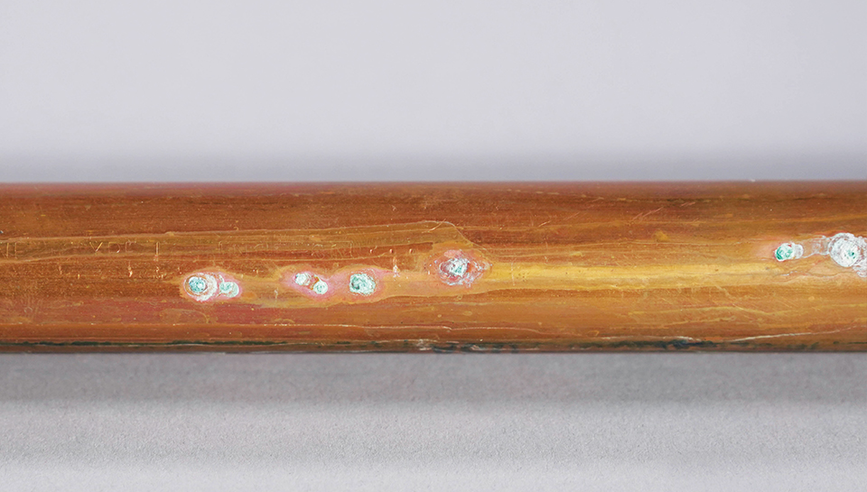
Pinhole corrosion in copper pipes may look like small, localized crystals. If you find similar spots on your pipes, work with a professional to mitigate the corrosion before these tiny pinholes develop into leaks.
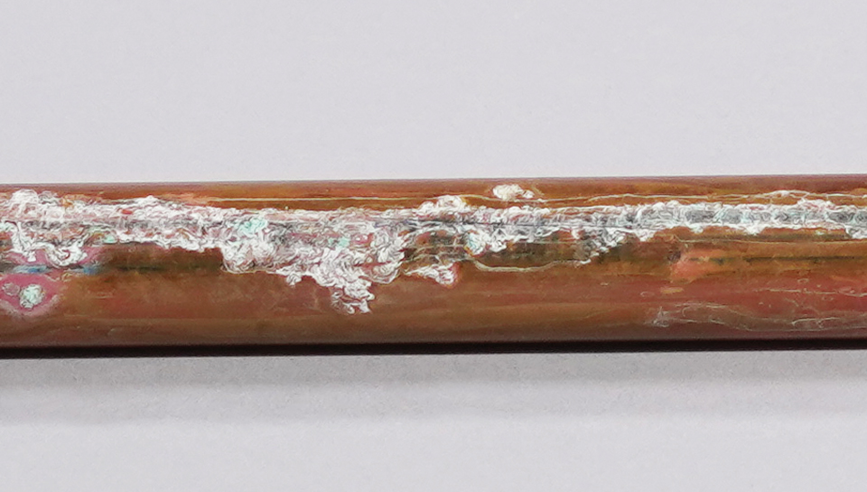
Even if you don’t see water shooting out of your pipes or pooling in areas around your pipes, you might already have a leak. The streak of white deposits on the copper pipe is an indication that water is already leaking from a pinhole in the pipe. This is a situation that needs to be addressed immediately, with the help of a professional.
The crystal-like deposit buildup may appear white, blue or green. These are often telltale signs of pinhole leaks, which could indicate a water chemistry problem. If you spot these, have your water tested and treated to prevent further damage (check with your state’s Department of Public Health or Department of Environmental Protection for approved laboratories). Any significantly damaged areas or active leaks will need to be repaired. These pinhole leaks can start out very small, but they can grow over time if left unaddressed.
Braided stainless-steel supply lines
Braided stainless-steel supply lines are commonly used to connect appliances and fixtures to your home’s piping. We frequently think of stainless steel as impervious to corrosion. However, commonly used stainless steels are susceptible to a very specific type of corrosion: stress corrosion cracking. Before a catastrophic failure occurs, signs of trouble may be visible to the naked eye. You might see rust and broken or frayed strands of stainless steel. Numerous individual strands frequently fail first before the lines burst.
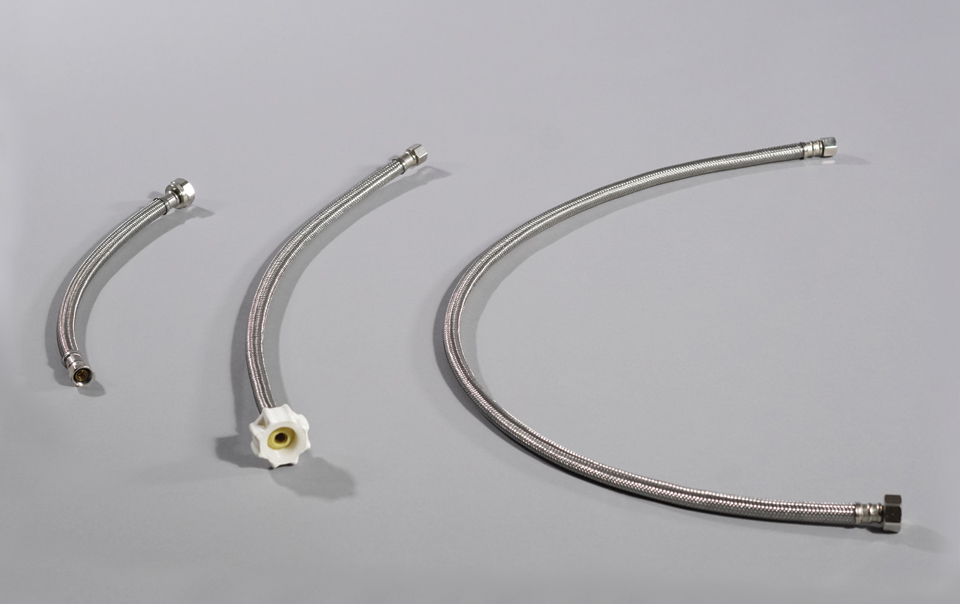
Braided stainless-steel supply lines commonly connect appliances and fixtures to your home’s piping. Supply lines shown from left to right are for a faucet, toilet and dishwasher. You might also find these on your washing machine or refrigerator.
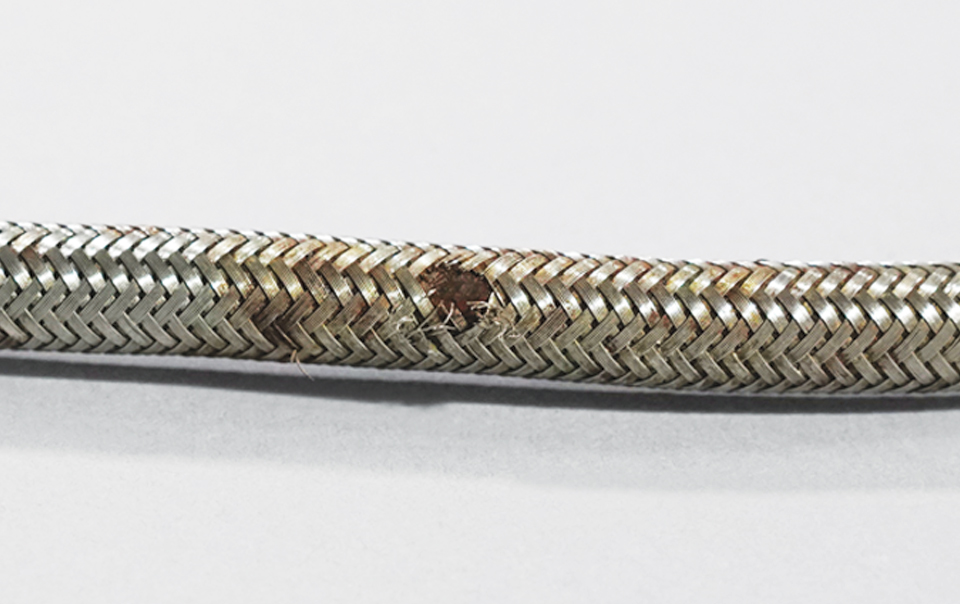
Signs of trouble may be visible to the naked eye before a catastrophic failure occurs. If you see rust, discoloration or broken braids, be proactive and have the hose replaced by a professional.
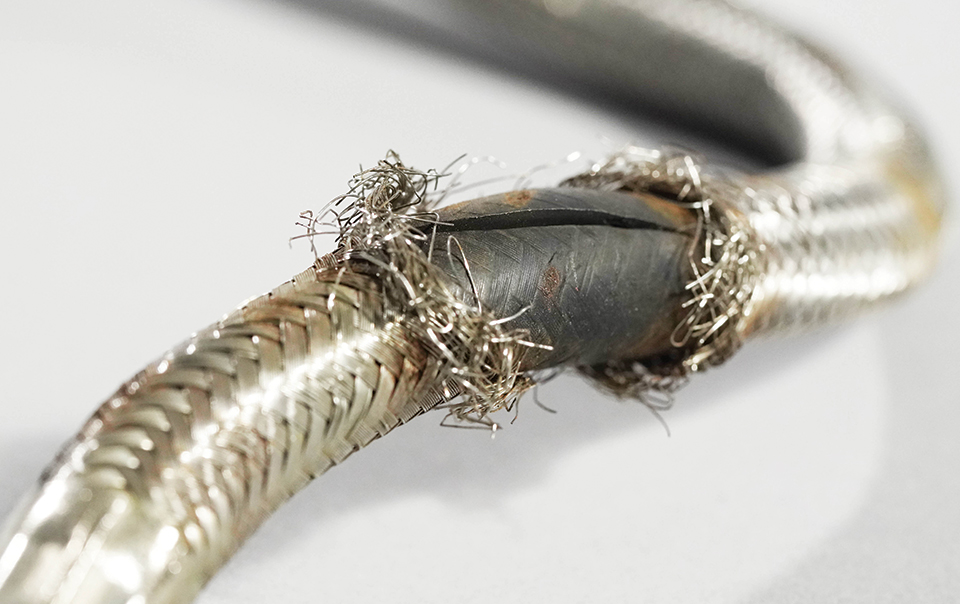
After the braids start breaking due to corrosion, these supply lines will eventually burst. The inner black hose is not designed to support normal water pressures. Try to catch the corrosion, discoloration and broken braids before a burst happens in your home.

Imagine how much water will shoot out of this split in this burst stainless steel supply line.
Brass valves
Significantly corroded brass components can fail catastrophically. Signs of corrosion include crystal-like deposits that may be white, blue or green in color. Problems with brass parts often stem from bad water chemistry, design and material flaws, or exposure to household chemicals and cleaners.
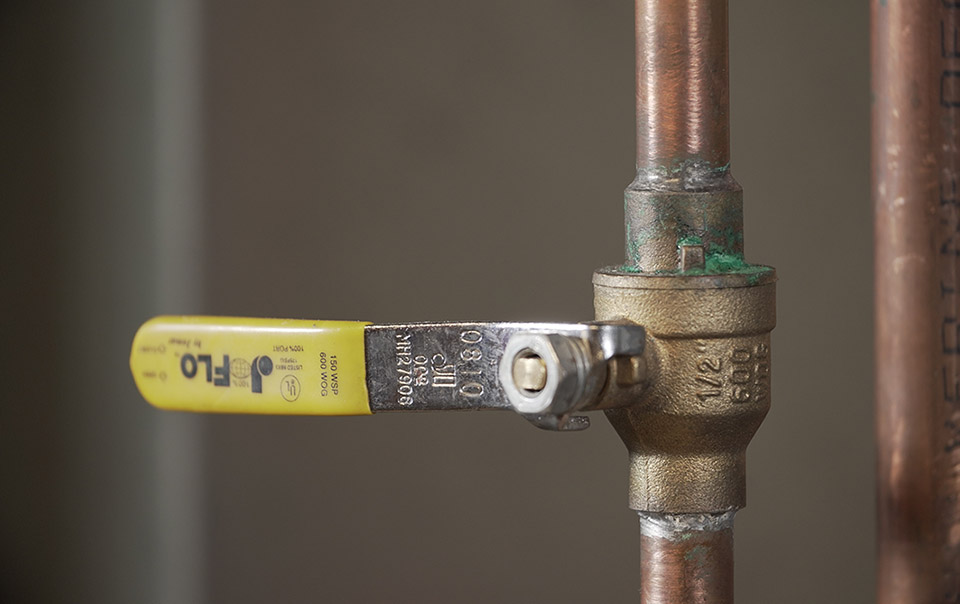
PEX tubing and connecting parts
Plastic plumbing parts are growing in popularity – particularly PEX. PEX piping is commonly being used instead of more traditional copper piping. Problems with PEX parts often occur because of exposure to chlorinated, hot water. Overall water chemistry or exposure to household chemicals can limit the life expectancy of PEX components.
When PEX parts begin to degrade or oxidize, they often exhibit cracking or discoloration, which can sometimes be seen by the naked eye. This makes regular visual inspection even more important.
Frequently, these plastic components are connected using metal fittings. These metal pieces can corrode or degrade, similar to the brass valves and braided stainless steel supply lines previously mentioned. Visual inspection of these components is recommended.
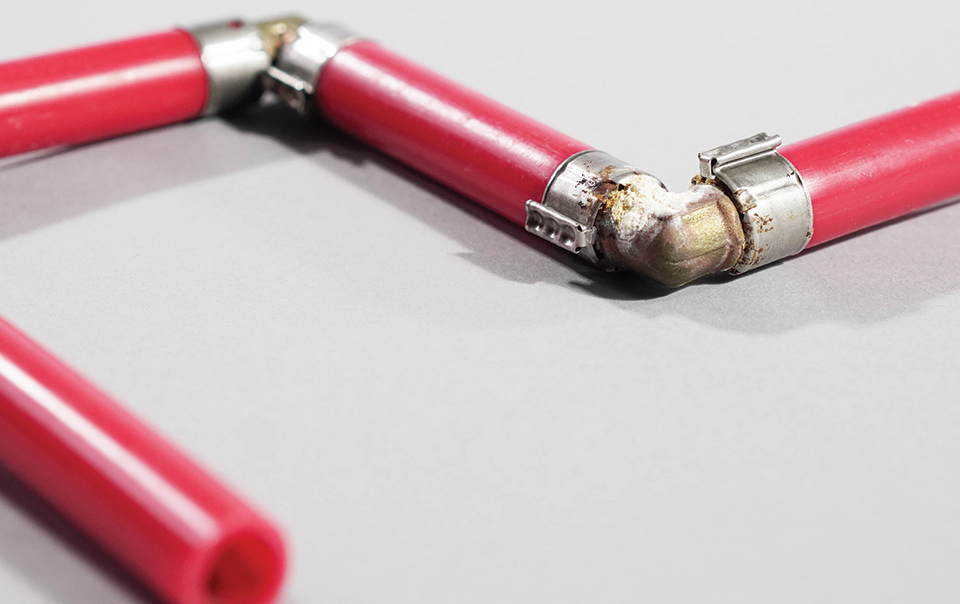
PEX tubing is becoming popular for many reasons, including its ability to bend and flex during installation. Plumbers frequently connect sections of PEX tubing to make sharp turns. These connections sometimes fail for various reasons. The connections in this image are brass with stainless steel clamps.
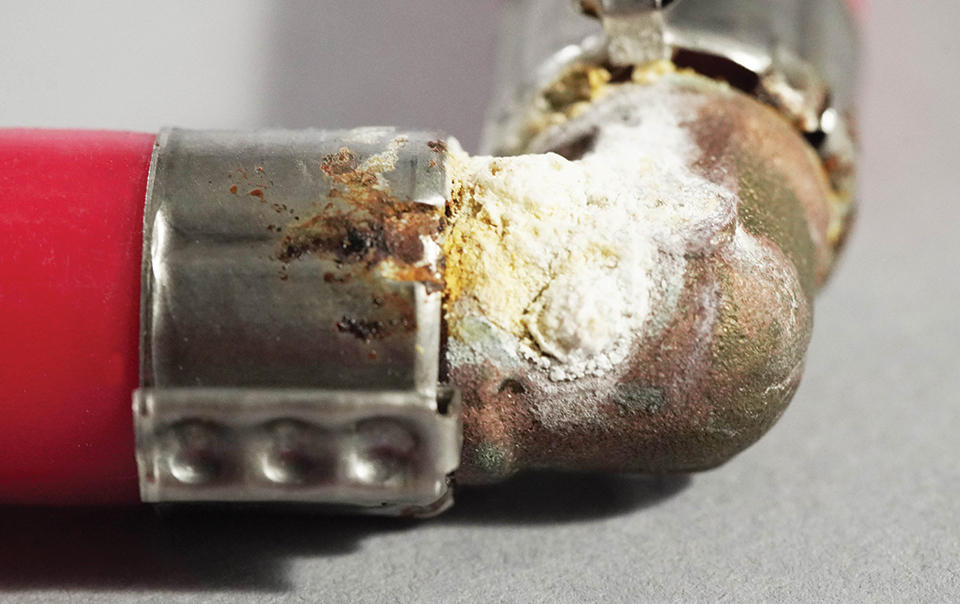
The brass connector and stainless-steel clamp in this PEX installation are severely corroded. This connection is very close to catastrophically failing. Look for signs of corrosion or leaking at any visible connection points in your PEX system. Don’t forget to inspect your PEX tubing as well – look for crazing, cracking or discoloration.
CPVC parts
Challenges can arise with CPVC (chlorinated polyvinyl chloride) parts, usually due to chemical or heat exposure. Signs of a problem include discoloration or cracking. This type of piping is commonly used for home fire sprinkler systems, though it also can be found in other areas of a home plumbing system.
Toilets
Toilets can have a number of unexpected problems. Tanks are made of brittle ceramics, which can crack and cause catastrophic damage. Cracks sometimes spread slowly and can be caught before major damage occurs. Staining or discoloration on the outside of the tank may indicate a hairline crack. Also, regularly check the flush mechanism in the tank, as it can degrade over time. Look for signs of damage, corrosion or cracking, and replace periodically.

The flush mechanism in your toilet tank can degrade over time. Check it regularly for cracking, crazing or discoloration. If this component fails, your toilet might keep running, leading to potential water damage.
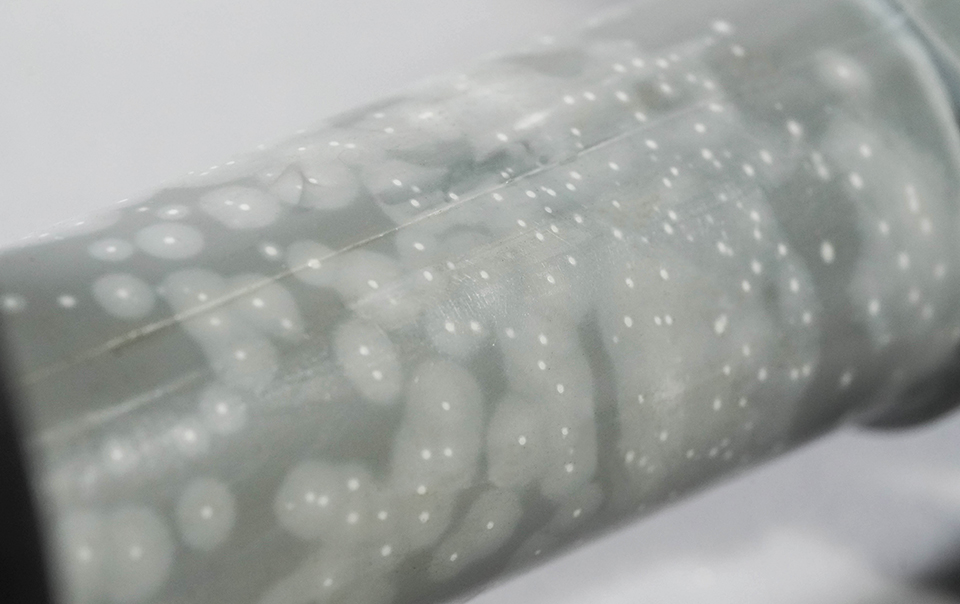
This flush mechanism has started to degrade. Notice the discolored white spots on the gray tube. Further microscopic inspection would reveal tiny cracks developing at the center of those spots. The cracks could grow and can lead to catastrophic water damage to a home.
Next steps
If you spot any of the above signs with your plumbing, consult a plumbing professional as soon as possible. If your water supply comes from a well, you may also want to get it tested. Water chemistry is often at fault for many common plumbing problems.
You might also want to learn about your home’s systems and appliances to better understand how to maintain them and what their general lifespans are.
Finally, consider installing a leak detection system or water sensors. These can help spot leaks early and may help in preventing significant damage – and costs – in the long run. They can even be connected to your smartphone.
Protect yourself
Are you protected if a plumbing problem crops up in your home? Double-check your homeowners insurance to ensure that you’re properly covered for non-weather-related water damage. Contact your agent today to get started.

